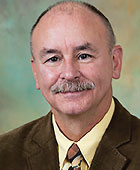Preparing for Disasters at the Community Level: Prevention and Social Cohesion
Abstract

As I write this commentary, I’ve just used my snow blower for the fourth time this weekend after a massive winter snow that followed a massively wet fall, and now I’m hearing predictions of a potentially massive spring flood. (My wife and I thought this winter might be rough, so we took a work vacation in warmer climes, at a mental health conference in Australia—while bush fires raged. You can’t make this stuff up.)
As psychiatrists, we are impacted by disasters in multiple ways. We attempt to mitigate the impact of trauma on our patients (both those with a history of adverse experiences and those without) and prevent further victimization. We strive to buffer our families and communities from the effects of natural, human-caused, and other perils, and yet there are often too many variables that may affect the outcome.
How do we help ourselves and others not to catastrophize catastrophes? How do we channel Osler’s “Aequanimitas” to benefit both individual and population health? (Osler defined this term as “coolness and presence of mind under all circumstances.”) Let’s review the common concepts in both prevention and disaster.
Physicians are trained in prevention concepts as they pertain to health. Types of prevention include the following: primary, secondary, and tertiary. (I like the oft-noted “quaternary prevention” as well, which essentially is avoiding iatrogenic causes of harm.)
Phases of disaster include mitigation, preparedness, response, and recovery:
Mitigation ties in with primary prevention: foreseeing risk and limiting likelihood of occurrence.
Preparedness is linked with the event at hand—evaluating imminent risk and dampening down impact, in a secondary prevention fashion.
Response is the management of significant impact, that is, tertiary prevention.
Recovery allows not only for review of impact, but of lessons learned; the opportunity to evaluate, grow, and build.
Let’s apply these concepts as they relate to disaster mental health work:
Mitigation/primary prevention can include assisting our patients and families in disaster planning. It can include managing current illnesses to the best of our abilities. It can also include reminders to reinforce social connections. We know that social isolation is a significant risk factor for many physical and mental health issues. Data from some recent disasters, including our experiences with flooding in the upper Midwest, demonstrate that increased social cohesion may be linked to fewer negative mental health outcomes.
Preparedness/secondary prevention can include activities related to both psychological/individual and infrastructure, particularly if one has timely knowledge of potential or slow-moving disasters such as floods, droughts, heat waves, wildfires, rising sea levels, and other climate change consequences. For example: “This is what you might expect during this event; make sure you have refills of your medication and a ‘go kit.’ If our office is closed and you have an emergency, please do the following. ... ”
During one flood, our city’s engineering department worked with social and mental health case managers to assist vulnerable populations with housing planning after assessment of infrastructure risk.
Response/tertiary prevention can manifest in many ways, depending on severity and type of impact. Mental health professionals may be able to work not only with patients in providing care, but also with city and social communities in assisting populations by providing wellness recommendations via media, social media, and other communication channels.
Given the hot topic of burnout, mental health professionals need to be aware of their own needs during the above situations. One of my colleagues, a Red Cross disaster mental health trainer, always taps a colleague to help her track any signs of her own stress and struggles.
Let’s not forget that during times of such crises, we have a significant amount of training that can be applied in helping ourselves and others. We are physicians—we have competence. We have cognitive and behavioral tools to identify and reduce stress; we have expertise in problem solving. And after all is said and done and we have tried our best, we are trained scientists. We need to evaluate the process, learn, and grow. Regrettably, there will be increasing opportunities to use our skills as the adverse consequences of climate change accelerate and proliferate. ■



